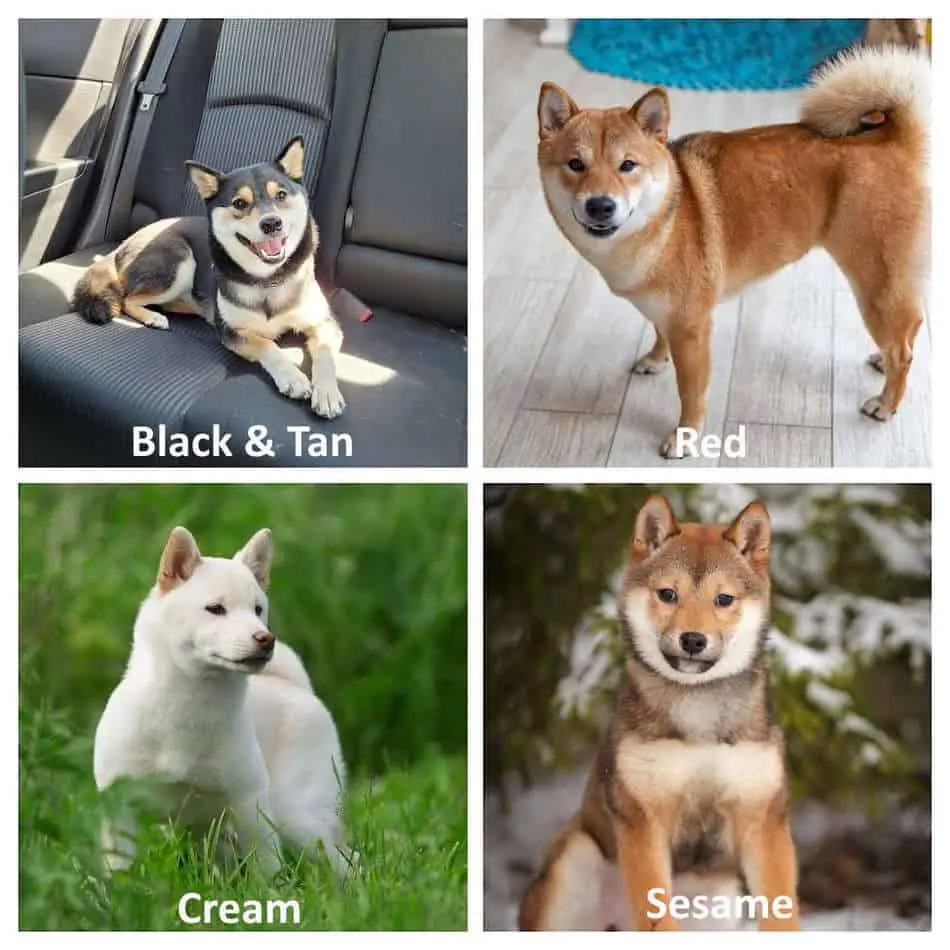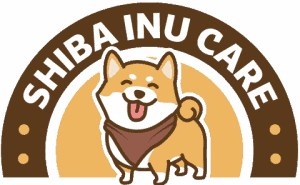This post contains affiliate links.
Do you love Shiba Inus and want to know more about their rarest color? Shibas are known for their unique coat colors and patterns, but some colors are rarer than others.

Shiba Inus are a Japanese breed that is recognized for their fox-like appearance and independent personality. They are known for their thick fur, which comes in a variety of colors, including red, black and tan, sesame, and cream. However, one color is considered the rarest of them all. If you’re curious to learn more about this elusive color, keep reading.
What Are the 4 Main Coat Colors For Shiba Inus?
Regarding Shiba Inus, four main coat colors are recognized by the American Kennel Club (AKC). These colors include red, cream, black tan, and sesame. Each of these colors has its own unique characteristics and traits.
Red Shiba Inus
Red is the most common coat color for Shiba Inus. This color can range from a light cream color to a deep, rich red. The red coat color is caused by the Ay gene, which is dominant. Red Shiba Inus may have white markings on their chest, underbelly, and legs, known as Urajiro.
Cream Shiba Inus
Cream Shiba Inus has a light-colored coat ranging from ivory to pale cream. The Ay gene also causes this coat color, but it is recessive. Cream Shiba Inus may also have Urajiro markings.
Black And Tan Shiba Inus
Black and tan Shiba Inus have a black base coat with tan markings. The tan markings are usually found on the cheeks, eyebrows, chest, legs, and underbelly. This coat color is caused by the At gene, which is dominant.
Sesame Shiba Inus
Sesame Shiba Inus has a unique coat color that is a mixture of black and red hairs. This coat color is caused by the Agouti gene, which produces the black-tipped hair. Sesame Shiba Inus may also have Urajiro markings.
Are There Any Unrecognized Palettes For Shibas?
Shiba Inus are known for their distinct coloring, with red being the most common. However, there are other recognized colors, such as black and tan, sesame, and cream. But are there any unrecognized palettes for Shibas?
While there are no official unrecognized colors for Shibas, there are some rare variations that some breeders and enthusiasts recognize. These variations include:
- Brindle: This color is a mix of black and red hairs, creating a striped pattern. While not officially recognized, some breeders consider it a rare and desirable color.
- Blue: This color is a dilution of black, creating a blue-gray appearance. The AKC does not recognize it, but some breeders and owners find it unique and striking.
- Piebald: This color is characterized by large white patches on a colored background. The AKC does not recognize it, but some breeders and owners find it visually appealing.
It is important to note that while these colors may be rare and desirable to some, they are not recognized by the AKC and may not be accepted in show competitions. Additionally, breeding for rare colors can lead to health issues and should be done with caution.
What Is The Urajiro Pattern Of The Shiba Inu?
The Shiba Inu is a dog breed known for its unique coat colors and patterns. One of the rarest and most sought-after patterns is the Urajiro pattern. The Urajiro pattern is a white or cream-colored undercoat that is seen on the chest, underbelly, and legs of the Shiba Inu.
The Urajiro pattern is a genetic trait that is inherited from the dog’s ancestors. It is believed that this pattern was originally developed to help the dogs blend in with their surroundings while hunting in the mountains of Japan.
The Urajiro pattern is not seen in all Shiba Inus and is considered a rare and desirable trait. Breeders may charge a premium for puppies with this pattern, which is often sought after by those looking for a unique and beautiful pet.
It is important to note that while the Urajiro pattern is desirable, it is not the only factor to consider when choosing a Shiba Inu. Other important factors include the dog’s temperament, health, and overall appearance.
What Is the Rarest Shiba Inu Color?
Shiba Inus are known for their distinct and beautiful coat colors. While there are several colors that are commonly seen, some colors are rarer than others. In this section, we will explore the rarest Shiba Inu color.
What Is the Most Popular Shiba Inu Coat Color?
The most popular Shiba Inu coat color is red. This color is so common that many people believe it is the only color in which Shiba Inus comes. Red Shiba Inus has a beautiful, vibrant coat that ranges from a deep mahogany to a bright orange-red. They often have a white underbelly and a white “sock” on each paw.
What Is the Least Popular Shiba Inu Color?
The rarest Shiba Inu color is black and tan. This color is so rare that many people have never seen a black and tan Shiba Inu in person. Black and tan Shiba Inus have a black coat with tan markings on their legs, cheeks, eyebrows, and underbelly. They often have a white chest and white “socks” on each paw.
While black and tan Shiba Inus are rare, they are not recognized by the American Kennel Club (AKC) as an official color. The AKC only recognizes red, sesame, black, and tan as official colors for Shiba Inus.
Summary
You might be curious about the rarest Shiba Inu colors if you’re a Shiba Inu enthusiast. While the breed is known for its red, black tan, and sesame colorations, a few other colors are much rarer.
The rarest Shiba Inu color is the cream color, which is almost white. This color is so rare that the AKC does not even recognize it. The cream Shiba Inu is a beautiful and unique dog, but finding one is not easy.
Another rare Shiba Inu color is the black and tan with white markings. This color is also not recognized by the AKC, but it’s becoming more popular. The black and tan with white markings, Shiba Inu has a striking appearance and is sure to turn heads.
Finally, the blue Shiba Inu is another rare color. This color is a dilution of the black and tan color and is caused by a recessive gene. While the AKC does not recognize the blue Shiba Inu, it’s still a beautiful and unique dog.
Frequently Asked Questions
How Many Shiba Inu Colors Are There?
Shiba Inus comes in four recognized colors: red, sesame, black and tan, and cream. However, there are also some rare colors that are not officially recognized by the AKC, such as white, blue, and brindle.
Do Shiba Inu Puppies Change Color As They Grow?
Shiba Inu puppies can change color as they grow. For example, a red Shiba Inu puppy may appear more orange or yellowish, but their coat will become a deeper red color as they mature. However, the changes are usually subtle and do not drastically alter the dog’s appearance.
Is A White Shiba Inu Considered Rare?
A white Shiba Inu is considered rare because it is not a recognized color by the AKC. White Shiba Inus have a cream-colored coat and are often mistaken for the cream-colored variety. However, their coat is pure white and does not have any cream or yellowish tints.
Are Black And Tan Shiba Inus Less Common?
Black and tan Shiba Inus are not less common than other colors. They are one of the four recognized colors by the AKC and are just as popular as the other varieties. However, due to their similar coloring, black and tan Shiba Inus may be mistaken for other breeds, such as the Doberman or Rottweiler.
How Can You Tell A Pure Shiba Inu?
To determine if a Shiba Inu is purebred, you should check their pedigree and look for the proper physical characteristics. Purebred Shiba Inus have a curly tail, pointed ears, and a distinct facial expression. You can also check for any common health issues in the breed, such as hip dysplasia or allergies.
How Much Does A Shiba Inu Puppy Cost?
The cost of a Shiba Inu puppy can vary depending on the breeder, location, and demand. On average, a Shiba Inu puppy can cost anywhere from $1,500 to $3,500. It is important to do your research and find a reputable breeder to ensure that you are getting a healthy and well-bred puppy.
